
[327] Sturnus vulgaris, Starling
Introduction
Sturnus vulgaris, the Starling, is a common and widespread bird, almost always seen in flocks. In winter it can form much larger flocks that can number up to a million birds.
There are only two species in the genus Sturnus but many species in the wider family Sturnidae are also called Starlings. (Most Asian species are called Mynas – or Mynahs.) Sturnus vulgaris is the Eurasian Starling or Common Starling.
Taxonomy
Kingdom – Animals
Phylum – Chordates
Class – Aves (Birds)
Order – Passeriformes
Suborder – Passeri
Infraorder – Passerida
Superfamily – Muscicapoidea (Flycatchers, Thrushes and Starlings)
Family – Sturnidae (Starlings and Mynahs)
Genus – Sturnus
Scientific Name – Sturnus vulgaris
Name
Starling comes as a diminutive stær-ling of the earlier Germanic name of the bird. As early as the Eleventh Century, starling was used for juvenile birds while the general word for birds of all ages was stare. You can notice a similar trend with chicken and the word Pig (coming tomorrow.)
Sturnus, the Latin name of the bird, may be cognate with starling and possibly also with sparrow.
Description
The Starling is larger than [135] Robins, [251] Sparrows, [067] Goldfinch and [291] other finches but a little smaller than [347] Blackbirds and [348] Thrushes.
Its plumage is iridescent black, with purple or green gloss, covered in white spots. Male birds have long, loose throat feathers used in display.
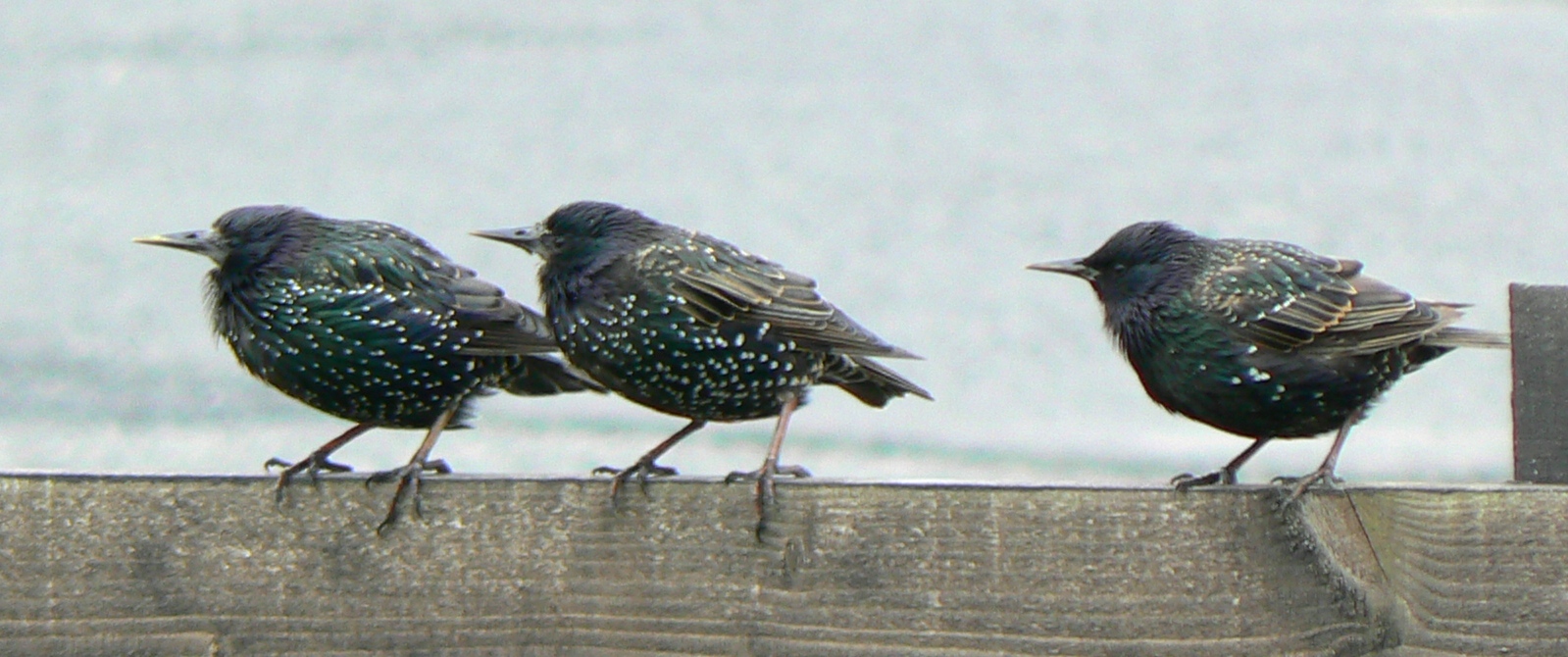

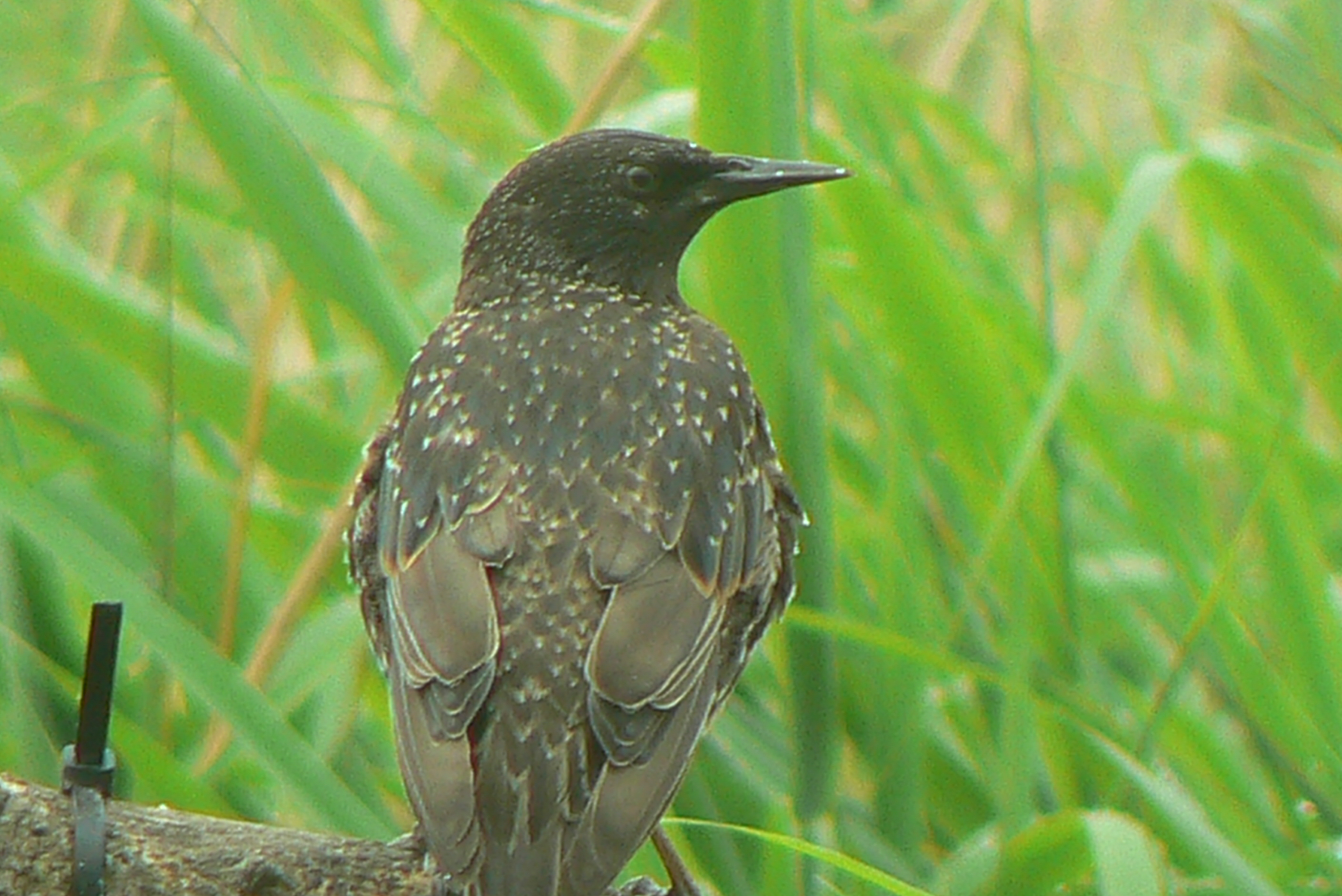





The bill is narrow and conical, dark brown or black in winter. In summer it is mostly yellow. The spots are less obvious in summer plumage.
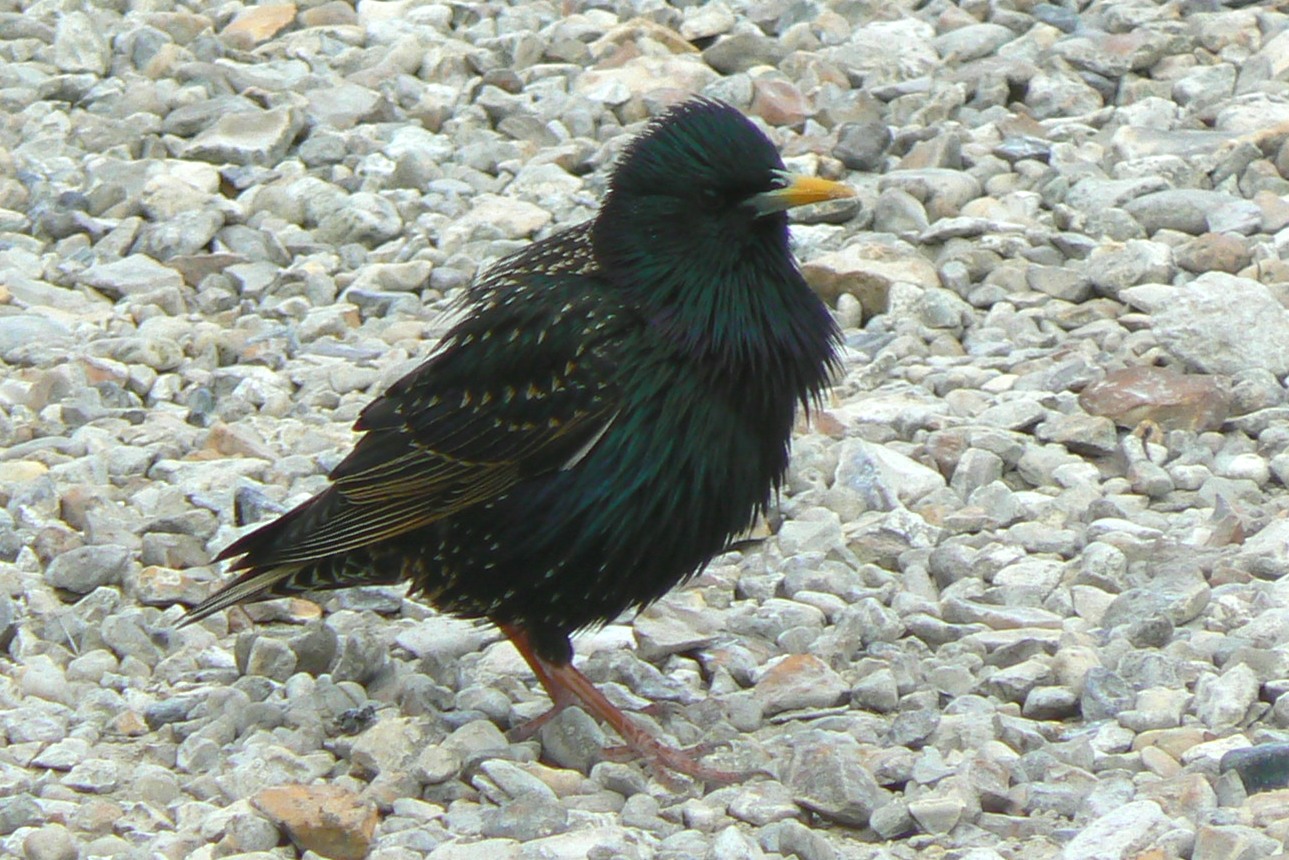
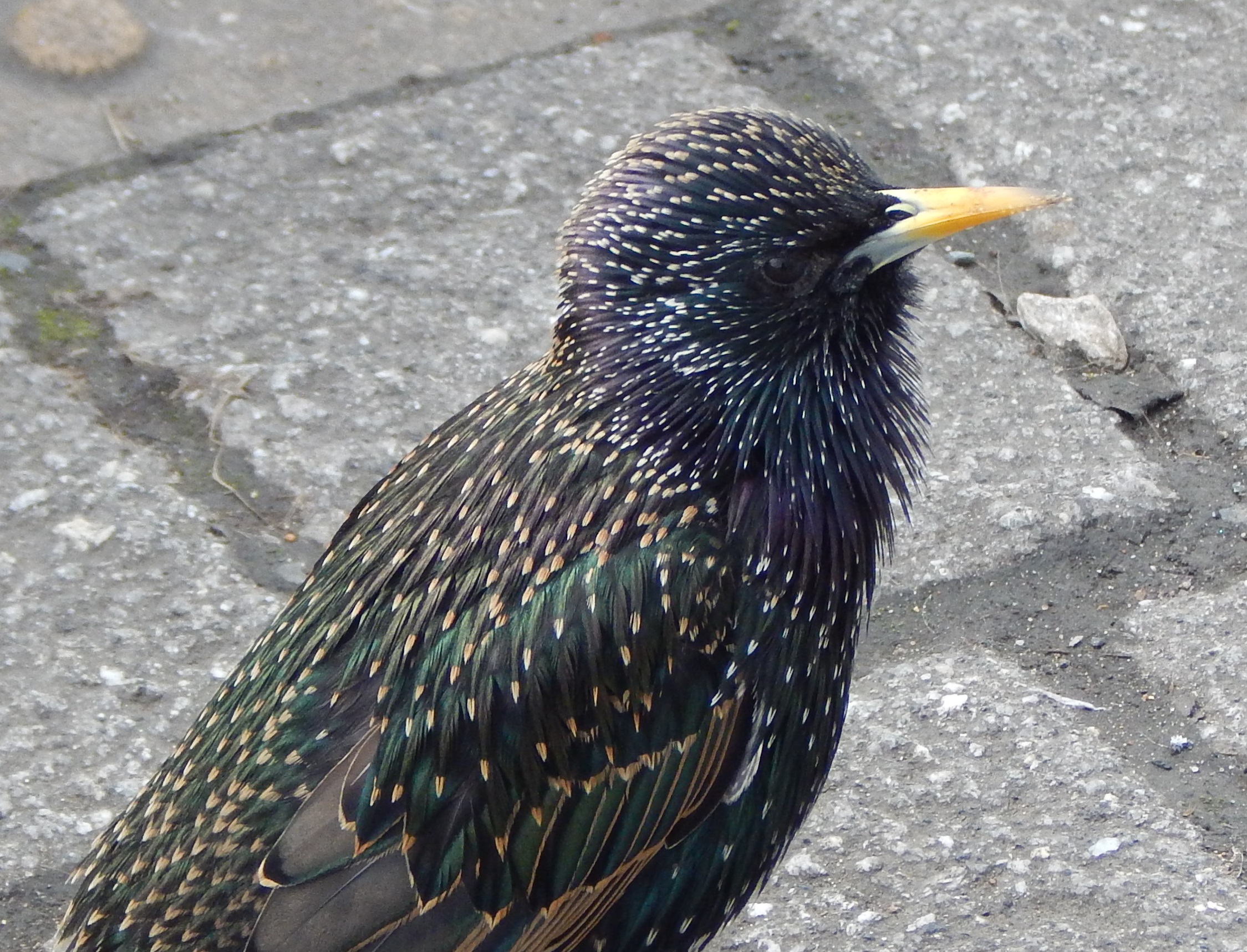
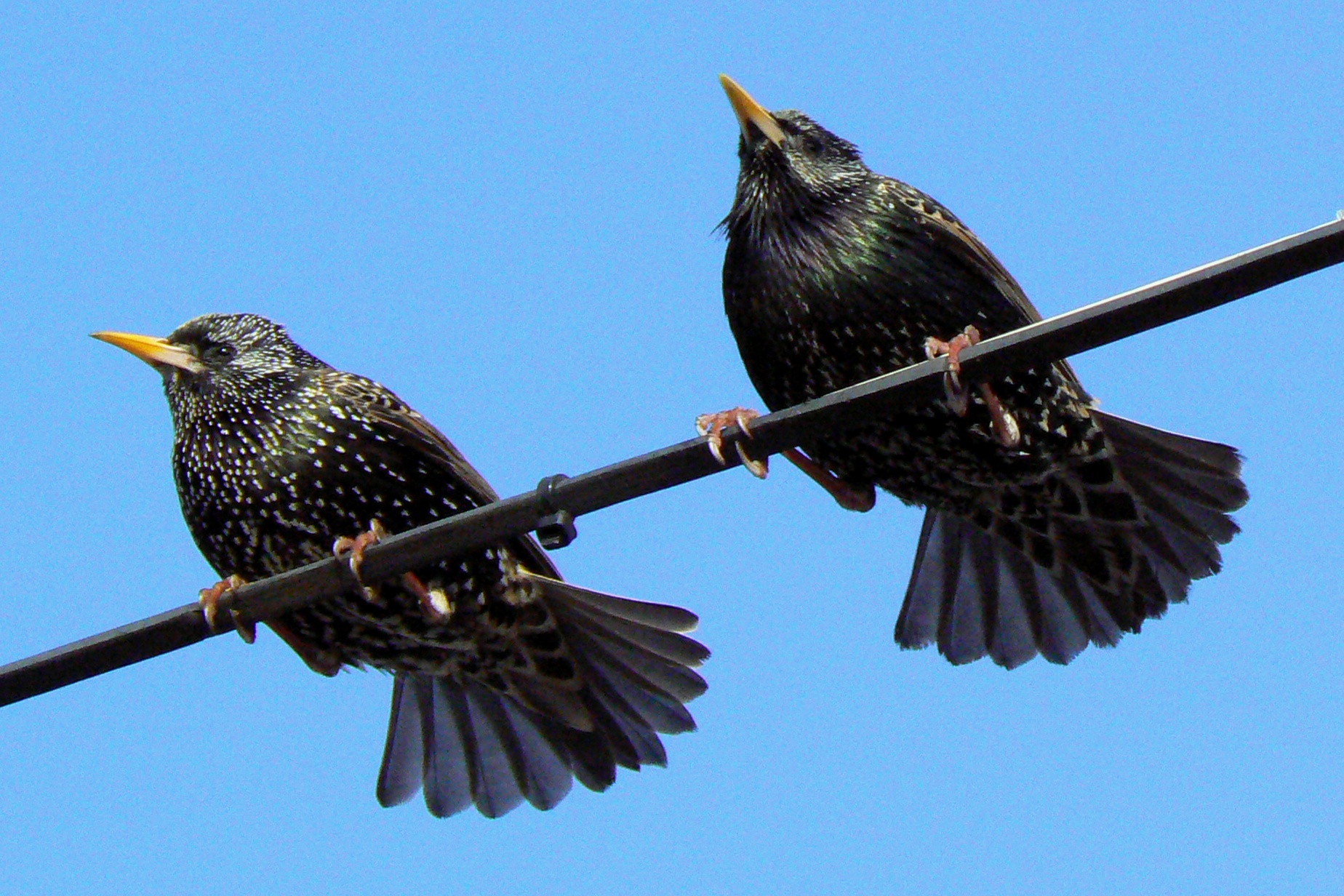
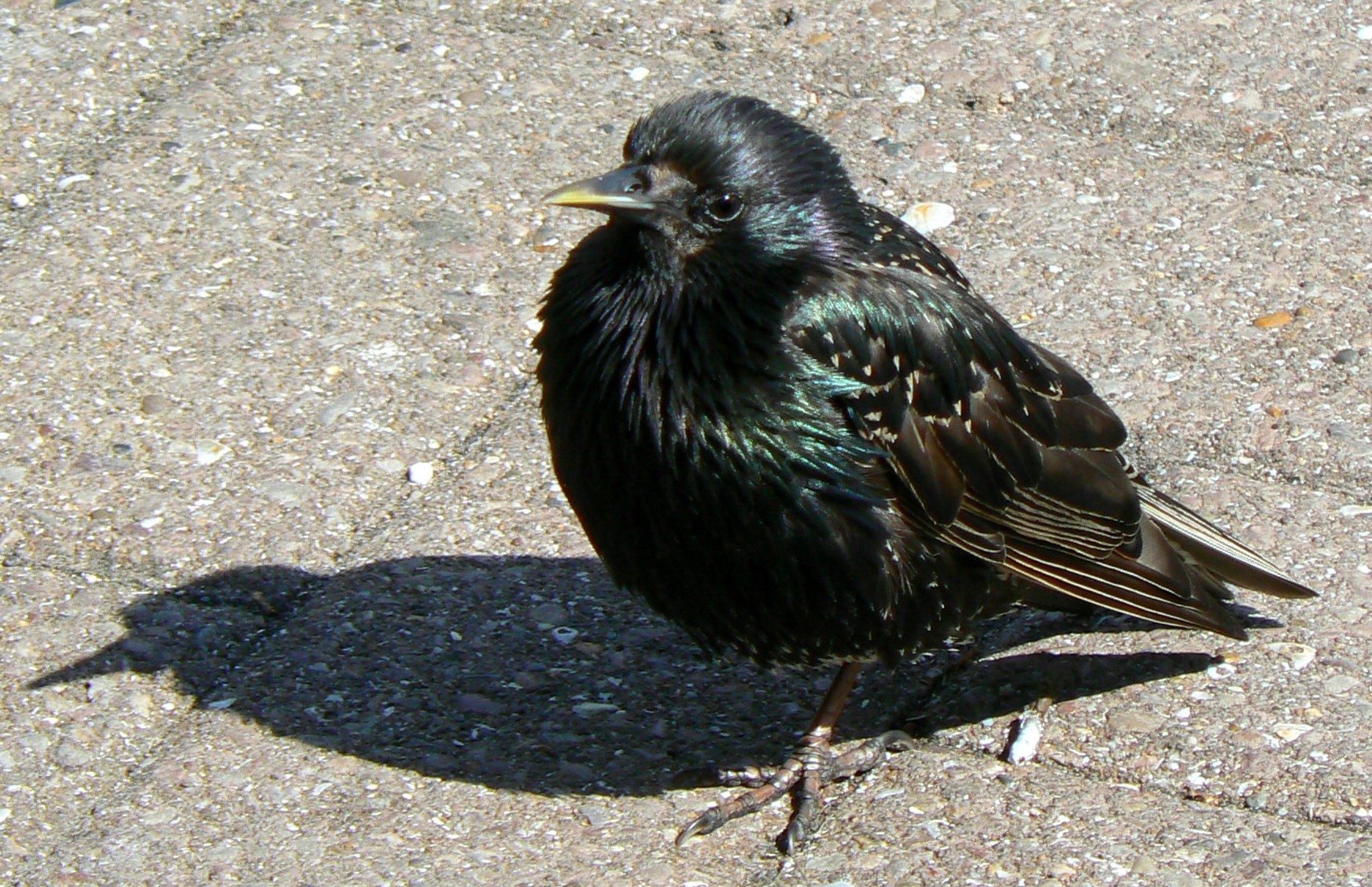
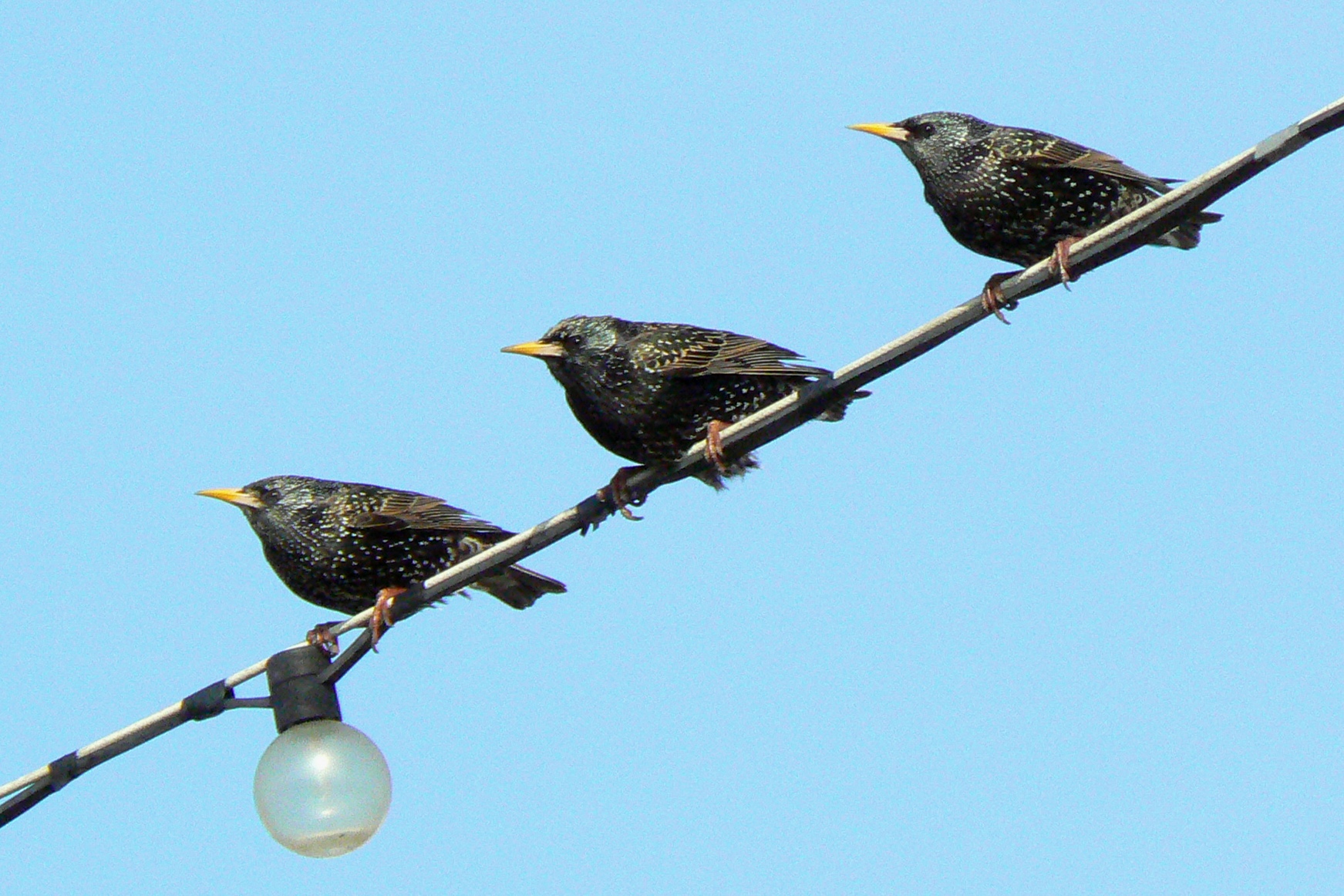


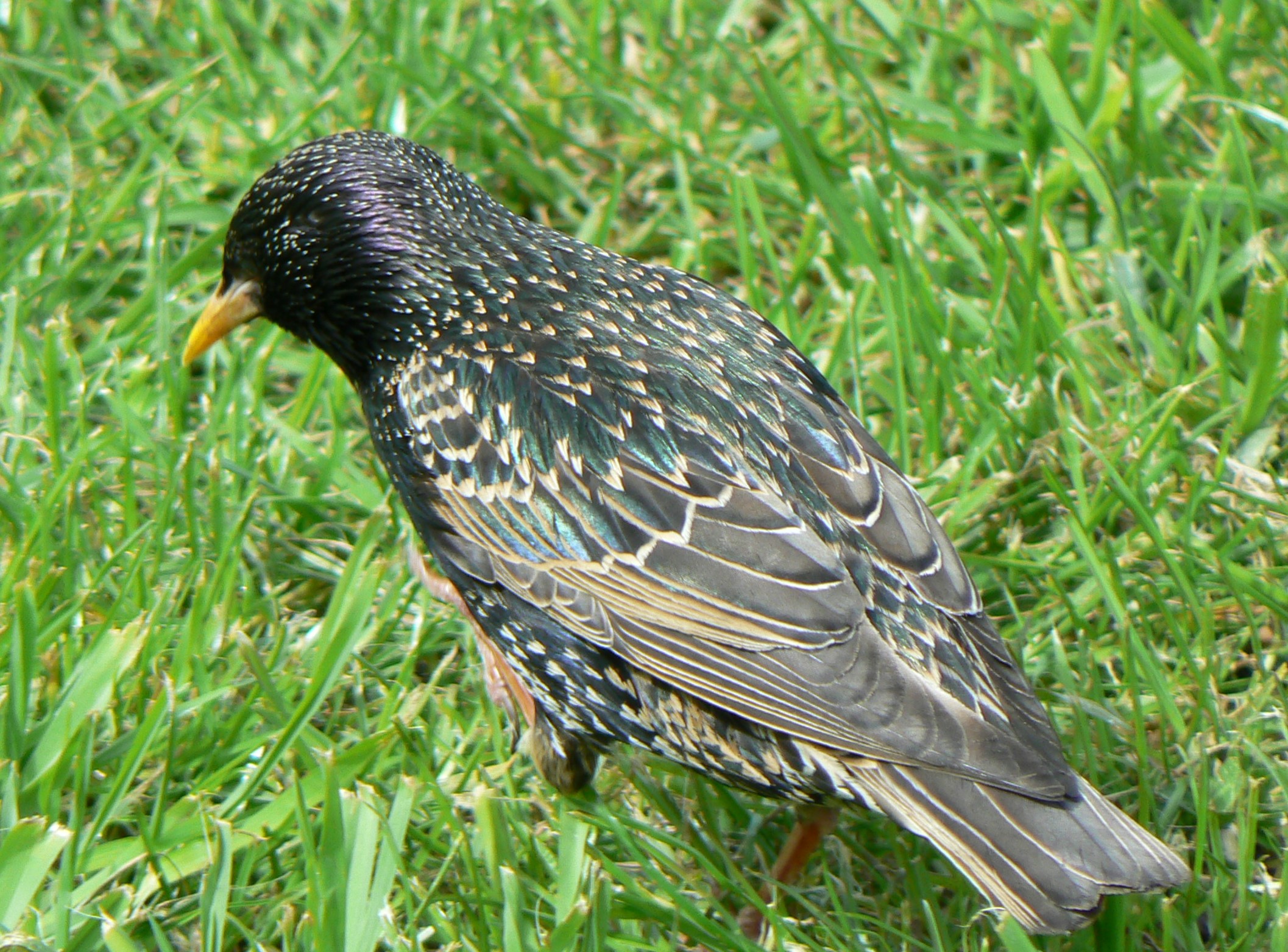

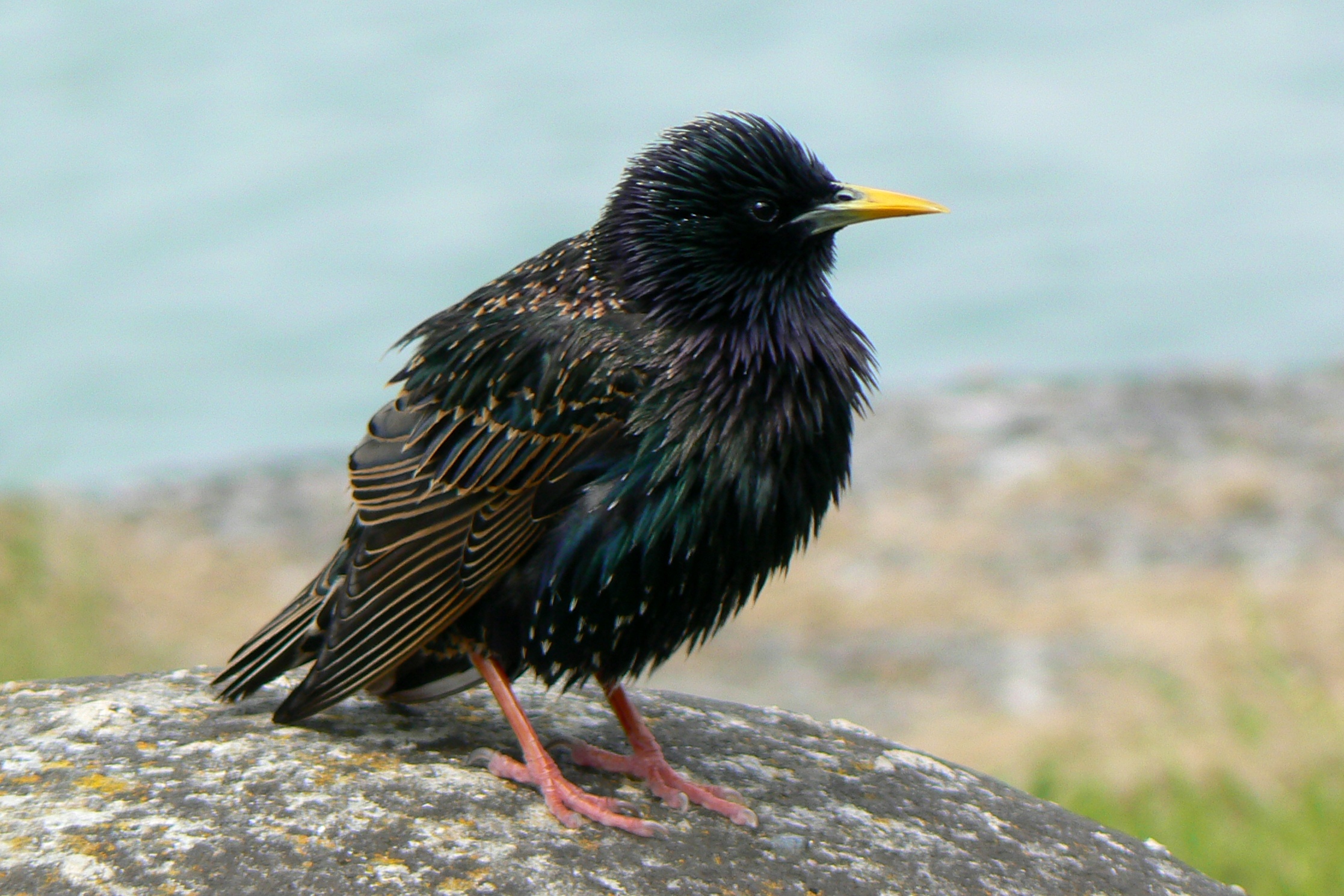
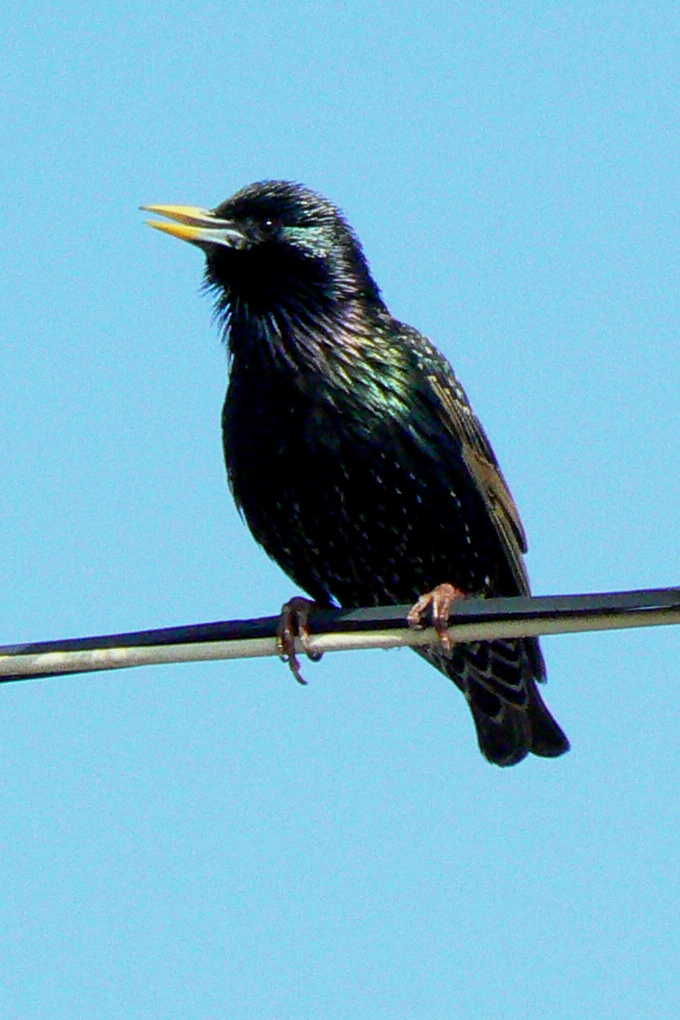
Juvenile birds are at first all brown. As they change to mature plumage, they may retain some brown, particularly on their backs.




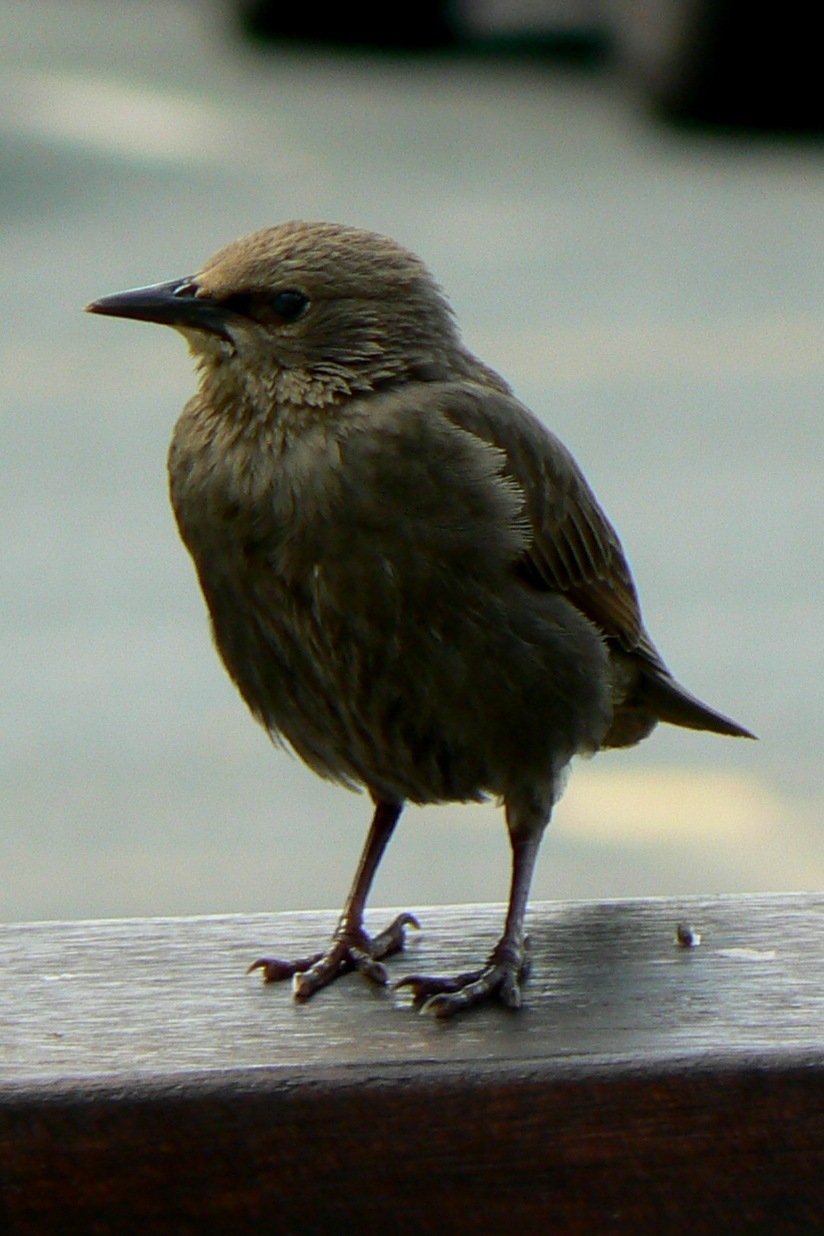



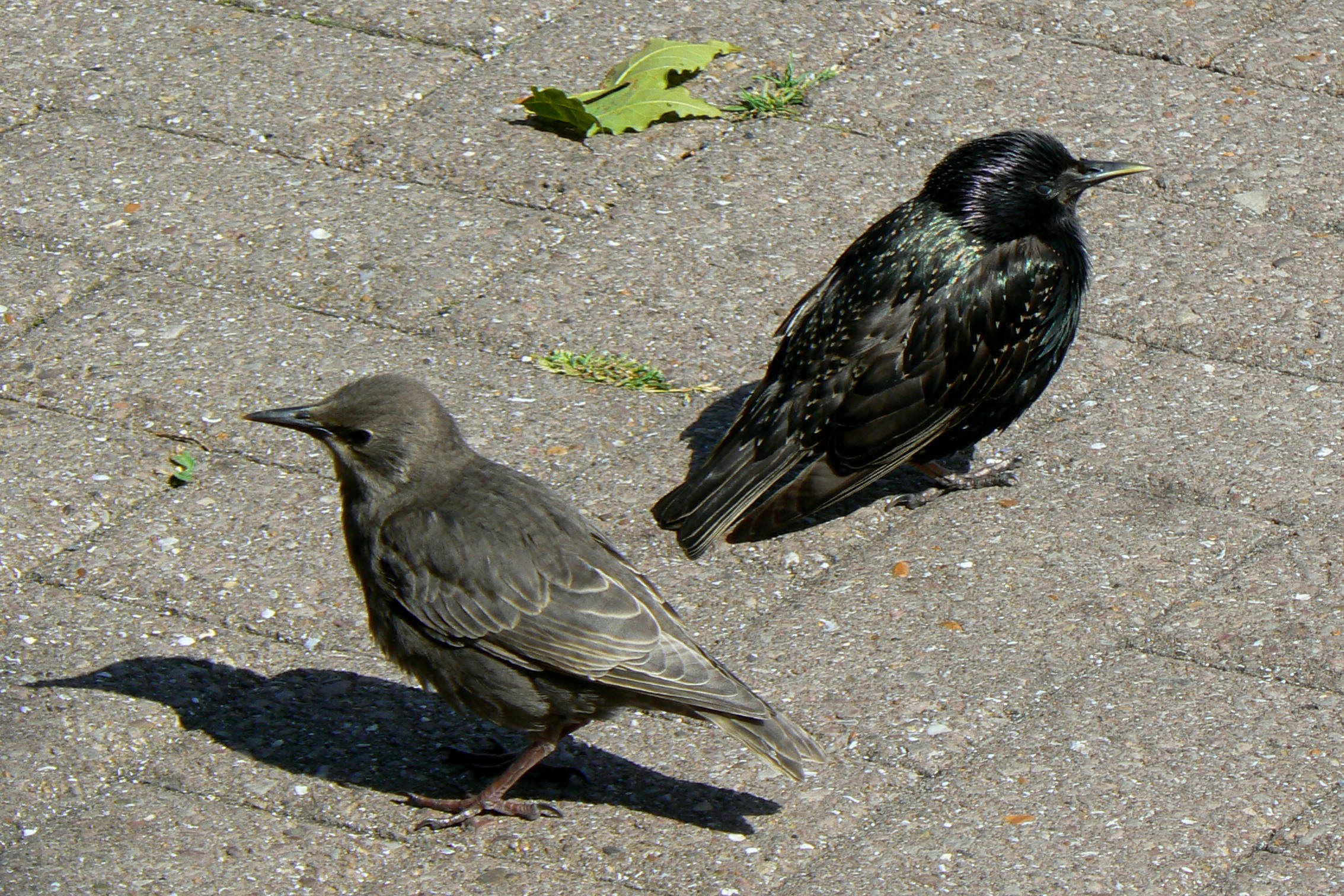

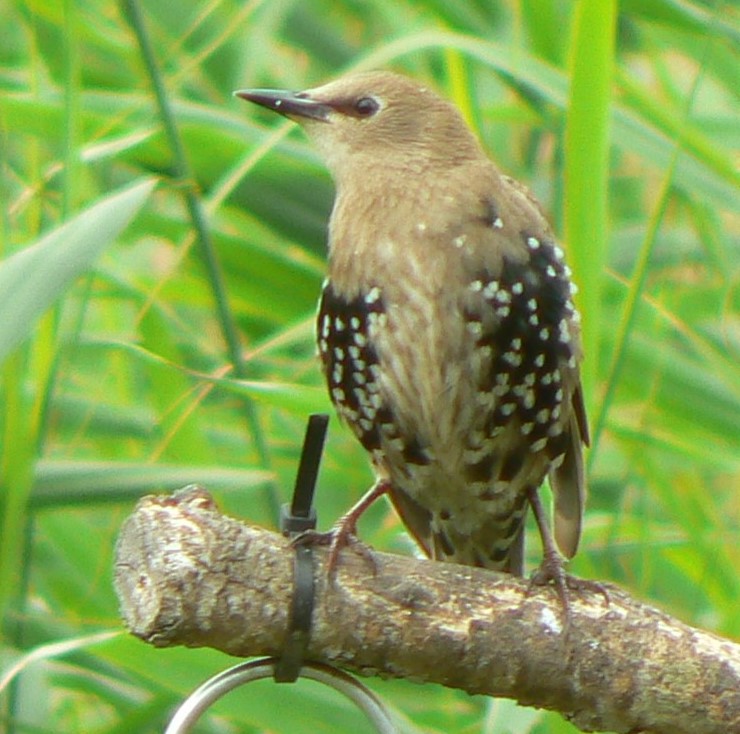
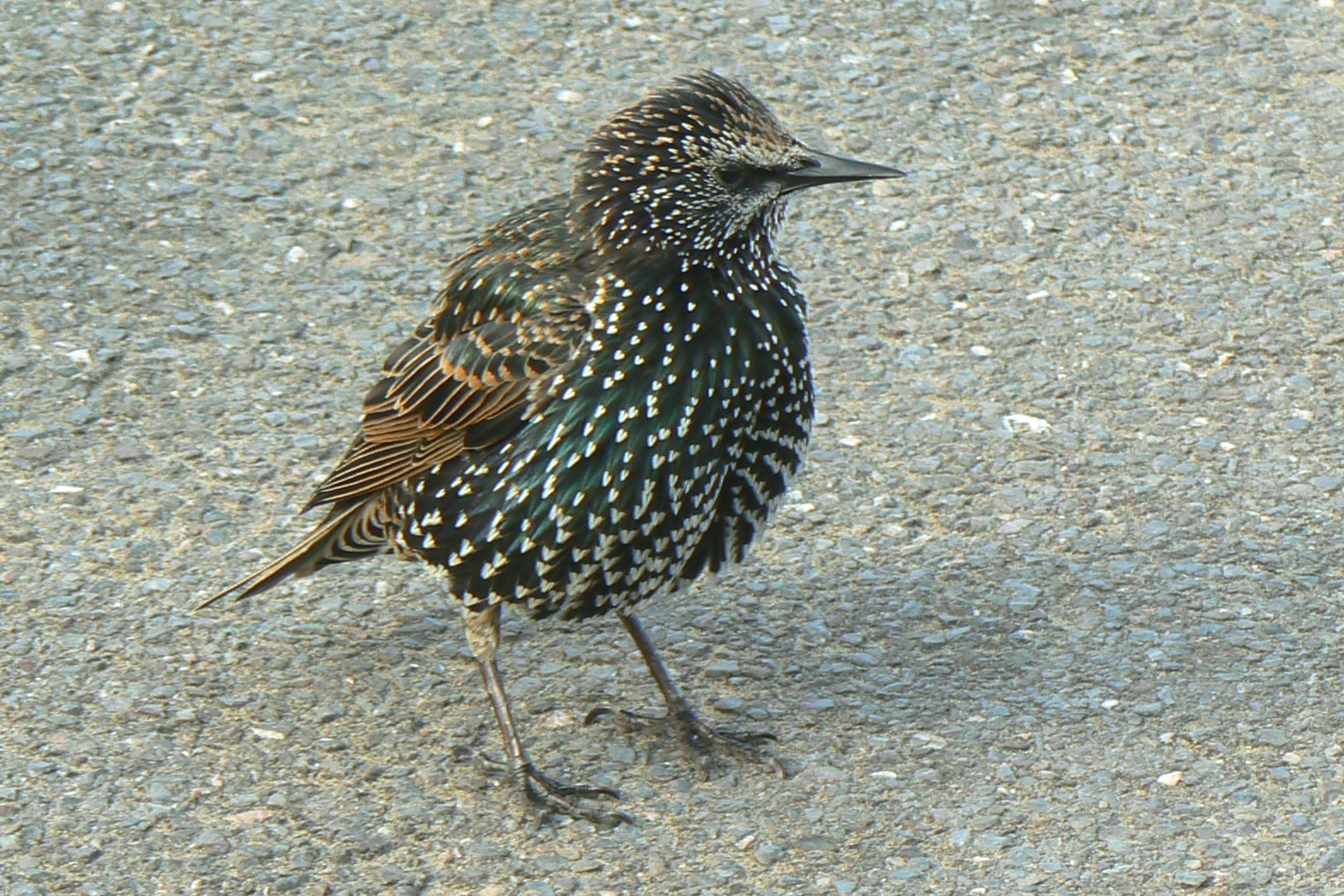
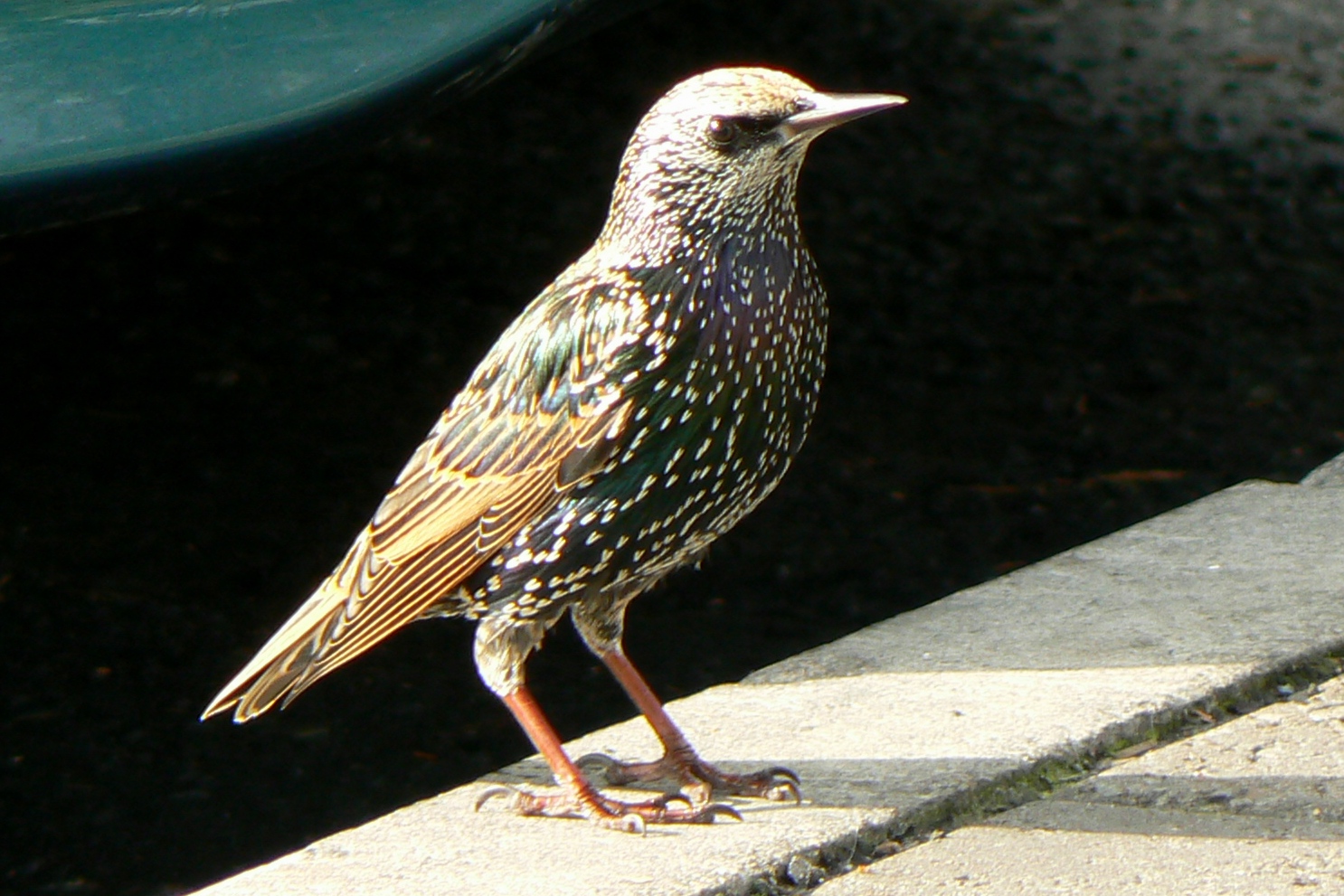

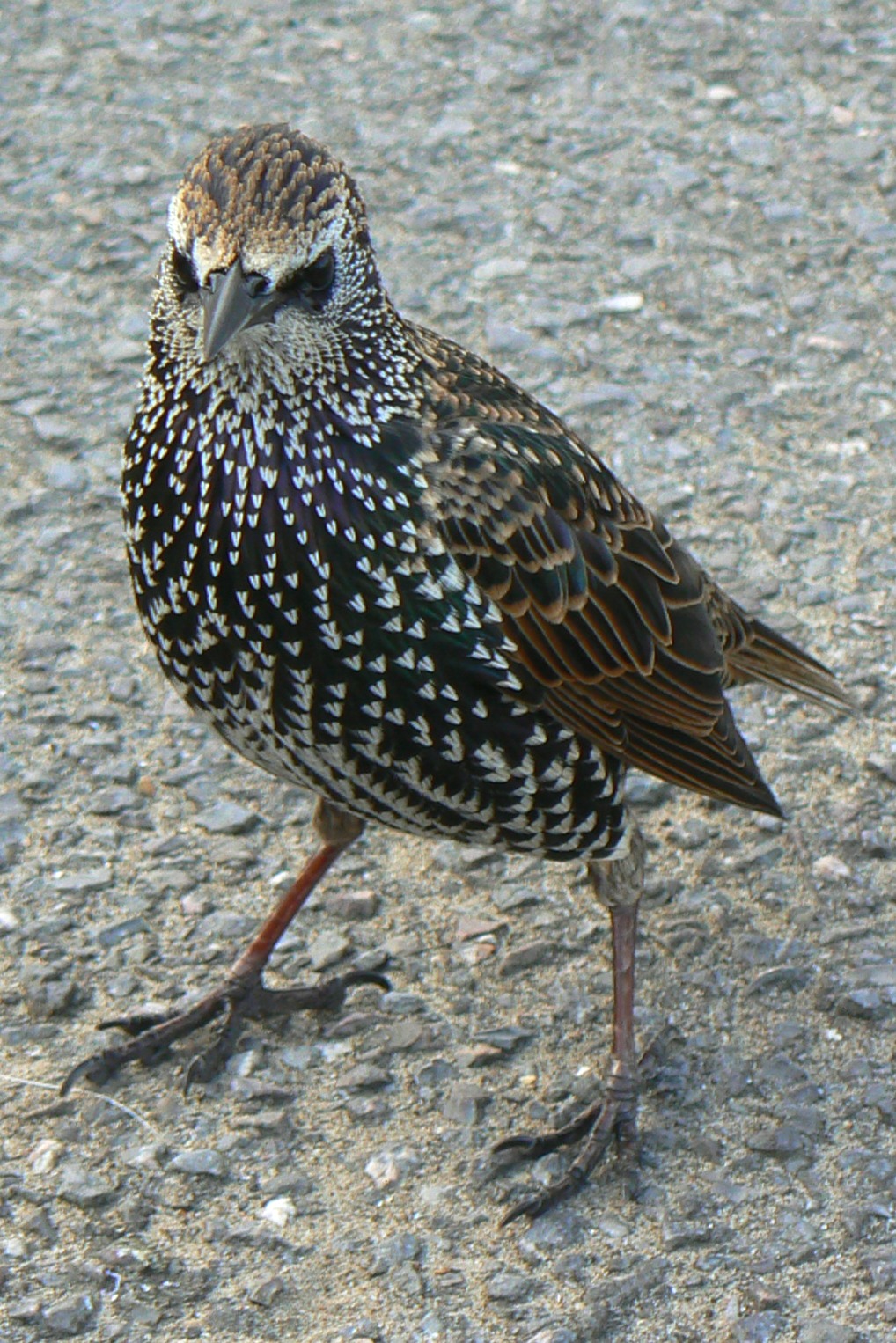
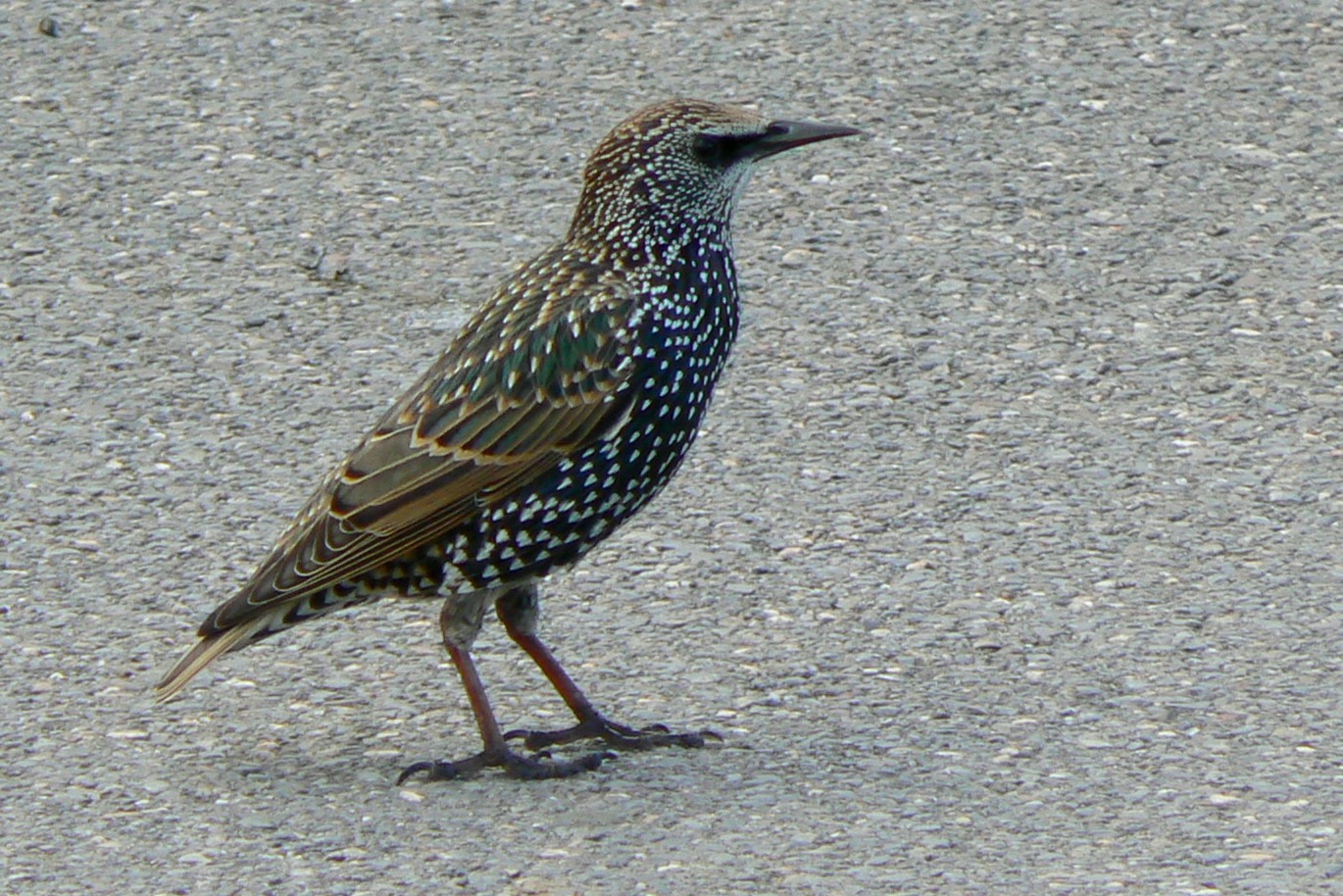


Habitat
Sturnus vulgaris is native to temperate Europe and Western Asia and has been introduced to South Africa, North America, Australia and New Zealand. It is a summer visitor in the northern part of its range and a winter visitor to the south. Between these areas it is resident all year including all of the UK where it is very common and widespread,
They will sometimes come to birdfeeders, although this doesn’t happen so often because they are so gregarious.




Other Notes
Starlings are very gregarious birds. Apart from breeding pairs with their young, you are unlikely to see them in small groups. You may see flocks of a few hundred in fields, in flight or resting in trees.





In winter they form larger groups. Here are some of about 30 000 I once spotted at a pig farm.

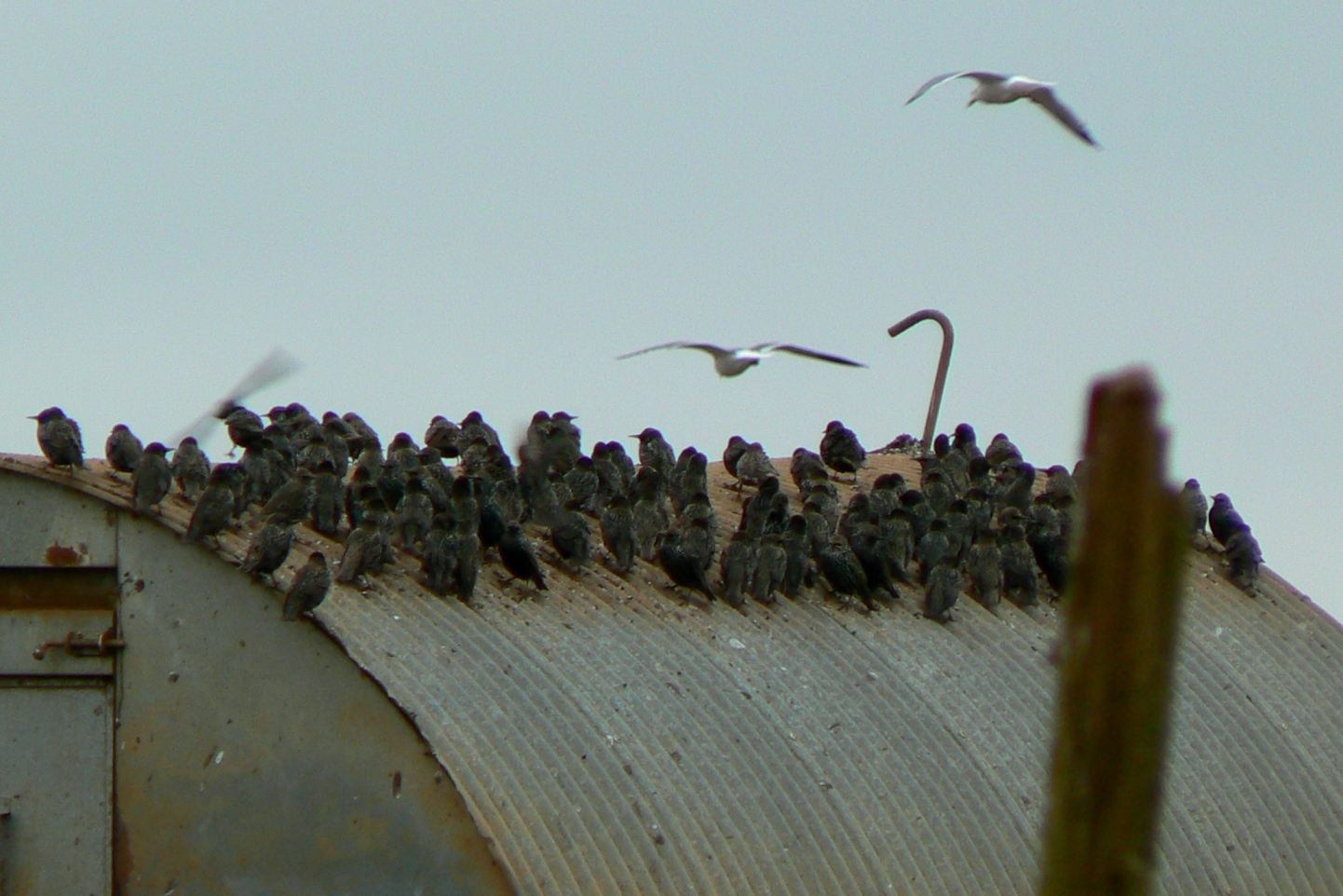
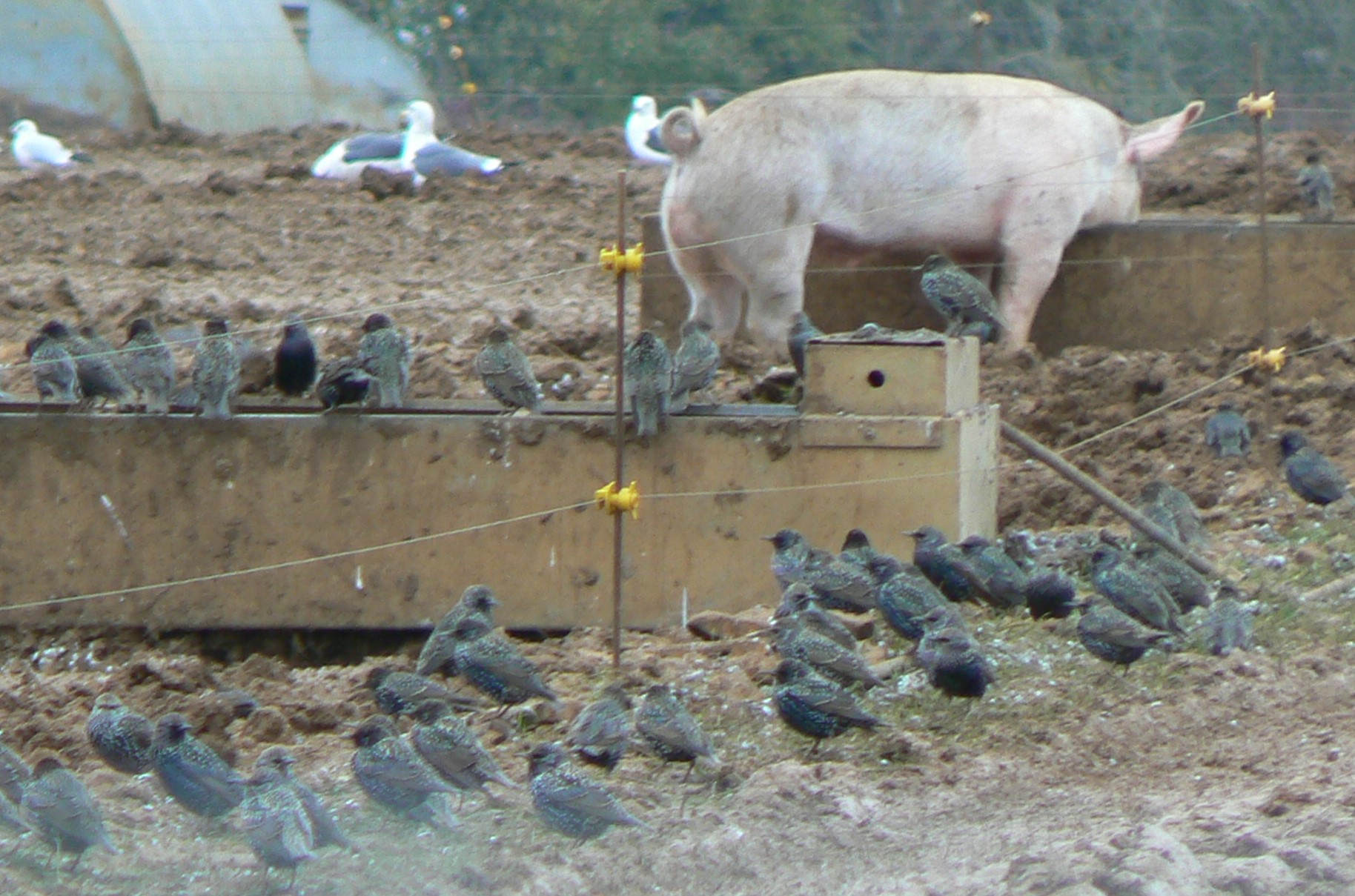
They tend to find one or two spots where they can roost and at the right time and place, normally around sunset, you can see murmurations of up to 250 000 starlings circling before they roost. They come from many miles away.
If you want to find groups of starlings to photograph, try the car parks at Motorway service areas. That’s where most of my pictures come from.
See also
With only a few more bird species to come, [347] Blackbird and [348] Thrushes are the only ones approximately like Starlings, but not so gregarious.
